The United Nations predicts that 68% of the global population will live in cities by 2050. This means that urban planners need to optimize for an increase in population.
Zagreb has been ahead of the urban planning game since 2008. The city has been developing a semantic 3D city model, also known as a “digital twin”. This is to improve urban planning development. Major cities like Singapore and New York also have digital twins of their cities made – and the number of cities that utilize digital twins is only set to grow.
What is a digital twin?
Digital twins are virtual replicas of physical objects or systems, using real-time data to simulate their real-world counterparts. In the context of urban planning, digital twins serve as powerful tools to enhance decision-making processes, streamline collaboration, and optimize resource allocation.
Zagreb’s SG3D – Case Study
Zagreb has been developing a 3D model since 2008. The model was created in light of urban developments, environmental protections, emergency management, heritage protection, and more. As improvements were implemented, it was on its way to becoming a digital twin.
Through the years, Zagreb has pioneered the creation of an intricate 3D model for urban planning, leveraging cutting-edge technology and data analysis tools.
Zagreb’s 3D Model from 2008 to 2016
Initially mapping out the entire urban area of the city in the model was the goal. However, with subsequent updated data and a lack of funding, the project took a fragmented approach. Flashforward 8 years later, the web app “ZG3D” was produced to present 3D data of the city.
Utilizing advanced technologies, including Geographic Information System (GIS) software and Esri’s ArcGIS platform, Zagreb’s municipal authorities meticulously crafted a three-dimensional model of the city. The GIS technology allowed them to integrate spatial data, analyze patterns, and visualize the urban landscape in unprecedented detail.
By 2016, Zagreb had made significant strides in refining its 3D model, enhancing its accuracy and granularity. The model became a valuable asset for urban planners, architects, and decision-makers, offering a holistic view of the city’s dynamics.
Data Integration with ArcGIS and Esri
ArcGIS, developed by Esri, played a pivotal role in Zagreb’s 3D model development. This GIS platform provided the city with the tools needed to collect, manage, analyze, and visualize spatial data.
Based on Esri technology, the app uses 3D and 2D data so users can customize the display of the model through different layers. ZG3D provides an intelligent 3D model of the city for municipal administration, education, science, economy, and other purposes.
Zagreb’s urban visualization app uses various forms of data to provide users with a high-quality display. Integration of 3D data of buildings and infrastructure and 2D data from the fields of urbanism, architecture, topography, geotechnics, public green spaces, heritage protection, and statistics creates what is the ultimate customizable view of the city. Data from ArcGIS is also used in the cloud to provide additional features for the application.
Through the combination of diverse datasets, ranging from geographical and topographical information to infrastructure details, ArcGIS facilitated a comprehensive understanding of the city’s complex urban fabric. This data-driven approach allowed for evidence-based decision-making, enabling planners to anticipate challenges, optimize resource allocation, and design sustainable urban solutions.
Current Issues With Zagreb’s Digital Twin Model
In light of the smart city approach, Zagreb’s 3D model is currently looking to upgrade its application to represent a more accurate digital twin to aid in improving urban design. Nonetheless, the city is currently restricted from this sort of adaptation because of two issues:
- A need to update and upgrade 3D building data
- Lack of live information integrations of urban processes and activities.
One of the primary issues faced by the city is the need for continuous data updates to ensure the model’s accuracy and relevance. Urban landscapes are dynamic, subject to constant changes due to construction, renovation, or other developments. Maintaining a real-time, up-to-date digital twin requires a constant influx of data and efficient mechanisms for data integration.
Furthermore, the sheer complexity of managing a 3D model of an entire city poses technical challenges. The volume of data required for an accurate representation demands sophisticated infrastructure and powerful computational resources. Zagreb’s planners need to grapple with the balance between data richness and system performance to ensure that the 3D model remains a functional and practical tool for decision-makers.
Future Plans
Despite these holdbacks, the city is moving towards making these changes for a digital twin model. Consideration for further updates, along with smart city projects such as tracking live data from waste management and transportation, will serve in the development of Zagreb’s digital twin.
Zagreb’s future plans involve the integration of emerging technologies, such as artificial intelligence and machine learning, to enhance the predictive capabilities of the 3D model. By harnessing the power of data analytics and automation, the city aims to proactively address urban challenges, optimize infrastructure development, and create more resilient and sustainable urban spaces.
Collaboration is another key aspect of Zagreb’s future plans. The city intends to create partnerships with academia, industry experts, and the community to ensure a holistic and inclusive approach to urban planning. By involving diverse perspectives and expertise, Zagreb aims to create a digital twin that reflects the collective vision and aspirations of its residents.
Zagreb’s 3D model for urban planning stands as a beacon of innovation in the realm of smart cities. Leveraging the capabilities of ArcGIS and Esri, the city has created a digital twin that empowers decision-makers with insights and tools for effective urban planning.
Ready to unlock your organization’s full potential? Contact us today and transform your organization’s data challenges into opportunities.





